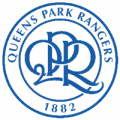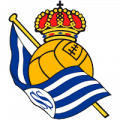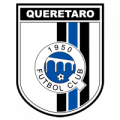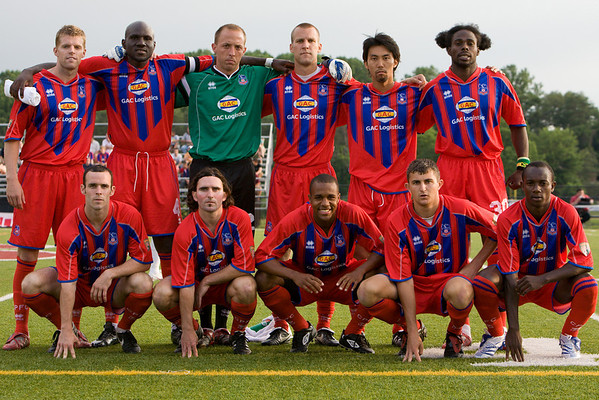When you think of Crystal Palace, what does your mind immediately fixate on? The south east London football club with 115 years of history? The two FA Cup Finals the club has reached? Or perhaps, the Sainsbury's stand, synonymous with Selhurst Park? Well, what about Crystal Palace Baltimore?
Unless you follow the Eagles religiously or have an immense football knowledge like no other, you will be forgiven for missing out on the Baltimore adventure.
Founded in 2006, it was a ground-breaking idea. The brainchild of Simon Jordan, Crystal Palace's Chairman, Phil Alexander, Chief Executive, and Bob Dowie, Director of Football and brother of then manager, Ian Dowie.
It was a deal that had never been seen before, a milestone for transatlantic relations. At a quick glance, you would have thought that the south Londoners had packed up and relocated halfway across the world to the east coast of America. The similarities between the two clubs were flawless; name, badge, sponsor and kit were all kept on brand.
The custodians of the Baltimore side would be Randall Medd, chairman, and main financial backer from a US standpoint. His son Pete Medd, who would oversee duties as club president and co-manager and finally, Jim Cherneski, co-manager, co-owner and player. Cherneski had an unsuccessful trial at Brighton & Hove Albion and played football to a decent level in America. He was also one of the main driving forces, pushing the deal over the line.

Pete Medd explains how the deal came to fruition, “My family had invested with Jim on a couple of tours prior to Crystal Palace Baltimore. We brought Sporting Lisbon over for a US tour before it was the big thing it is now."
He adds, "Jim and I had been college roommates, my family was involved from a financial aspect, and Jim recruited me pretty hard to come on board and be a part of this. Jim was primarily the point person on the original search for a partner.
"There were several clubs in Europe we were talking to when the initial outreach took place. When we really got advanced with Simon and Dominic Jordan, that’s when I got more involved. The initial deal was all about player recruitment, trying to replicate an academy in the US to feed Crystal Palace in England. It wasn’t a marketing deal. It wasn’t a shirt deal, it wasn’t even a brand expansion. At its core, it was all about player recruitment.”
The US was becoming a breeding ground for finding hidden gems – Landon Donovan and Clint Dempsey were just two of the names emerging as bright prospects in a country where soccer was the runt of the litter when it came to sporting integrity.
A businessman at heart, Simon Jordan wanted a slice of the action, seeing a prime shop window not only for the Crystal Palace brand, but also hopefully create a pathway for players to make the switch to Selhurst Park.
After six months of negotiations, a deal was signed, Crystal Palace Baltimore was born. In a 2007 interview with the Washington Post, Dominic Jordan said, as Crystal Palace Baltimore prepared for their first professional season, "We've done fantastically well to get to where we are. Longevity is important to us. We don't want to be in today and out tomorrow. We want to ensure a proper structure, a proper agenda, proper support."
Phase one: The birth
“There were different phases of the club,” explains Medd, “Initially, we put together an amateur side to play a friendly against Crystal Palace, who had come over to The States. That was our first event to kick off the partnership.”
With the club's philosophy based around scouting, an exhibition match was set up with the London side to seal the deal. Andrew Marshall, who would play over 80 games for the club, was part of the very first side put together in anticipation of the friendly.
“I was fresh out of college. I was looking to try and play professionally. I wasn’t selected for the draft, so it became me searching for a club, looking for trials. Crystal Palace had just formed, and they had invitational trials that I went to. There were probably 50 players over a couple of days. I was trying to sell myself to them.”
He continues, “The club started as an amateur side, with a lot more focus on the youth aspect to spread awareness and find talent. Palace’s first team came over for the summer pre-season. Jim threw a team together of some younger college guys, people who were just graduating and former professionals.”
Despite the fact the side had only been put together a few days prior, in their inaugural match, Baltimore would only lose 3-1 to their new London counterparts, with Peter Taylor fielding a team that contained Dougie Freedman, Clinton Morrison, Ben Watson and Jay Bothroyd, who was on trial with the club and later denied he ever played in the game.
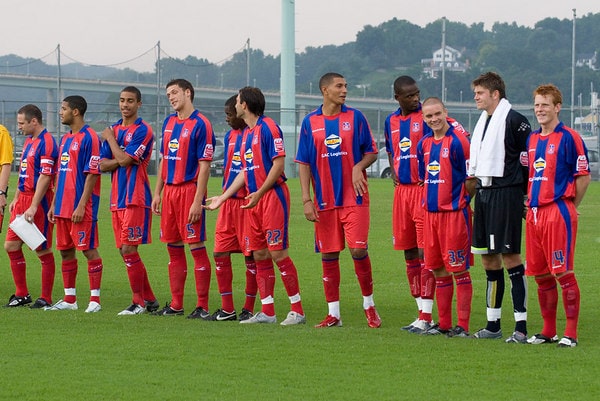
The ad hoc Baltimore outfit did contain a special player, someone who would go on to play 96 games for Rangers, 46 times for the USA national side, playing in the 2010 World Cup, and he even made an appearance in the Premier League. His name was Maurice Edu.
Medd sighs when the topic of the midfielder is brought up, “The one that got away.”
Just to reiterate, the partnership between the two sides was focused around player recruitment and development in the hope that Crystal Palace would be able to find a diamond in the rough.
So, when a player, who has come recommended by their new associates, would be presented as someone the club should quickly act on, Simon Jordan and Co would take a look into it, considering Palace were paying a fee in the region of £100,000 - £200,000 a year in funding to Baltimore, in return for the possible player investment.
No, quite the opposite. Palace passed up on Maurice Edu, “I think there were a few of the staff at the time still seeing American players as not as high quality,” believes Medd.
“If he had come from Serbia or Holland, he would have been signed. There was still that mental barrier for the staff that they didn’t pull the trigger.”
Despite giving Edu a wide berth, one player who Palace did pursue was Neven Subotić.
Born in what is now Bosnia and Herzegovina, Subotić relocated with his family to America. The defender wound up in the hands of Crystal Palace Baltimore, mainly thanks to Jim Cherneski’s extensive scouting network.
Medd reveals, “Neven got advanced further; he was in London at Selhurst Park with his father.”
The defender turned Palace down, which would prove to be the correct decision, eventually ending up at Borussia Dortmund, where he featured 195 times and won back-to-back Bundesliga titles, whilst also playing in a Champions League Final.
It was a shame he did not fancy Scunthorpe United away!
Medd continues, “What’s interesting about Maurice and Neven is we realised, through those two examples, that we, as Crystal Palace Baltimore, had to have the ability to control the rights of players. We did not control the rights to those two, we discovered them through our contacts and network. At that time, the decision was made that we had to have a professional level club here in the US, to be able to control the players’ rights via FIFA."
“The original plan was not to have a professional side here; it was to have an academy at an amateur club. Once we realised we don’t have any real power without being able to control players’ rights, that was a whole other phase of the project; a lot higher budget, a lot more risk, but we felt it was the right thing to do to be able to control players’ rights in the future.”
Phase two: The early days
Plunging the club into the professional world would only help the arrangement between Crystal Palace and their American franchise, which would involve the south Londoners returning the favour by sending players over to America in search of game time and to grow the brand.
Striker, Charlie Sheringham, alongside midfielder, Lewis Spence, both youth players at the time, part of a flourishing academy that contained emerging stars, Victor Moses, Sean Scannell, Lewis Grabban and Nathaniel Clyne.
Sheringham recalls his experiences at Baltimore as a 19-year-old moving halfway across the world in an attempt to develop his game, “I jumped at the chance. At the time, for me personally, I was still quite a skinny lad, 6ft plus, and I didn’t have a man’s body at 19 yet. It was a period in my progress where I wasn’t ready for Championship football.”
“We got there, and it was ‘shit, we haven't organised the flat yet, we’d better get you a bed.’ It wasn’t the most organised of places because it was all fresh and new to them. I remember as we flew into Baltimore, we had to go out with Pete Medd to buy duvets, cutlery and a TV. It was pretty weird because the club had not been set up too long; it was all very new to everyone.”
“It was a great idea to have this link with Crystal Palace, the two managers, Pete and Jim. They were nice guys. However, to start up a football club, you need a lot more than nice ideas. You need a training ground, a full-time physio, training facilities, a stadium to play in!”
Sheringham broke the mould. The typical loan move would have been to search for game time in League One or League Two. It was a brave step in footballing terms for the striker to take the leap, “I think there was some development from my time there. We didn’t have a training ground or a regular stadium. For me, it was more on the side on development as a person and growing up, not on the football pitch, but as a footballer. We were travelling all around the east coast of America on coaches. It was really a learning curve in that respect. I probably didn’t learn too much on the field, but as a whole, it was a great experience, and I learnt a lot.”

Born in Bromley, James Calder is a Crystal Palace fan who had moved out to Washington DC. He remembers hearing the news that his beloved team were setting up an American franchise, “When Simon Jordan announced he was going to start a franchise in the US, then when he announced Baltimore, I thought, ‘that’s really close, I can at least become a regular supporter, become involved some other way.' When they had their first exhibition match, before the first season, being a keen photographer, I went up to the game and offered my photographic services.”
He adds, "They were unorganized enough that when I arrived, they threw a press pass at me.”
One match turned into two, then three, before Calder become the defacto club photographer for the first season, documenting and capturing the campaign through the eye of his lens.
He says, “It was a two-person organisation, Jim and Pete. They hired people to do various things, but they were pretty much micromanagers on everything.” Calder would take up the role of director of communications after his first season, winning the trust of Medd and Cherneski.
Phase three: The next step
Coming off the back of the club’s second full season, things had started to improve, and the teething problems of the first year had settled, with the Eagles looking to build on the foundations that had been laid.
The next step was vital to ensure the long term success of the Crystal Palace Baltimore. Medd talks through the process, "Taking a global look at soccer in the US at the time, every professional club was losing money. If you are a lower-level club, the only way you make money is via a youth programme, where the youth players are subsidising and paying for the pro club. Or you own your own facility, and you have concerts, baseball games and hold different events; soccer itself doesn’t make money.”
“The way we wanted to build on our success was to leverage that into a stadium deal in Baltimore. That was the only way it was going to work long term. We took a run at it; we were in discussions with the State of Maryland, the City of Baltimore and the Mayor’s Office. We had very high-level architects come up with the concept of a 10,000-15,000-seater stadium in downtown Baltimore. We were getting there, but we were also losing money whilst getting to that point.”
Off the pitch, the club was starting to see the cracks which had begun to appear financially. On the pitch, the players continued to turn heads. Palace Baltimore played MLS side, New York Red Bulls in the US Open Cup.
“My glory days!” laughs Andrew Marshall, as he reminisces with fondness. “It’s the story of the FA Cup. A lower-division team gets to play against the big squad. They had to come down to our level, at our field. It added to the story and made it difficult for them. It was one of those moments that worked out in my favour. I'll never forget it. It was pretty special for me as an individual, and it was a good moment for our club.”
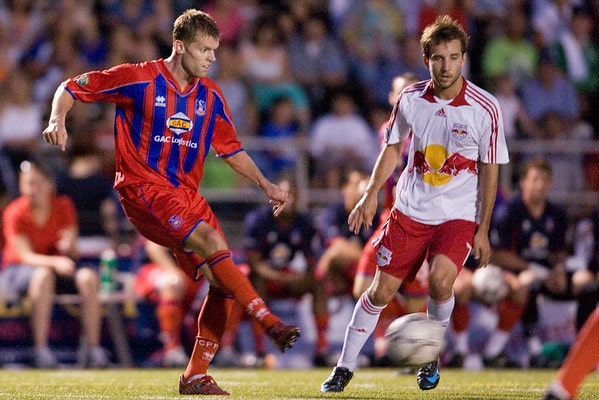
Marshall would play an instrumental role in the victory over New York Red Bulls, scoring the opening goal in a 2-0 win. The momentous victory set up a mouthwatering quarter-final cup tie against New England Revolution.
Sadly, the Eagles would be knocked out on penalties, but the club had caught the attention of the establishment, starting to make a name for itself on the American scene. “In 2007, we had our best on and off the pitch. I was the Executive of the Year for the third division in US soccer. We had success off the field. We were being held in high regard with the structure here in the US,” proclaims Medd.
Phase four: The cracks start to show
A season went by, and the City of Baltimore continued to stall over stadium plans. The club was losing money hand over fist, struggling to cope with the financial pressure of running a club in a country where most professional teams fail; a further source of income was needed.
Baltimore asked their London sister club for a helping hand, “I think the conversation was had, but the financial commitment stayed the same,” Medd explains. “The reply was along the lines of, ‘You can do this, we support the premise. However, you are on your own, our commitment level will stay the same, but we can't put any more into this.’ Having said that, the club did say they would help us in any way they can. They (The Jordans) were fabulous partners; anything they could do, they did.”
Keith Tabatznik was appointed as the academy director in the 2008 season, as Baltimore strived to discover more Subotics and Edus to keep the club afloat. He witnessed the problems start to unfold, “In 2008 – 2009, Crystal Palace were having their own issues, and Crystal Palace Baltimore was probably quite far down their list of priorities.”
The club had to act fast, recruiting someone who was highly regarded in the baseball scene in Baltimore, with his techniques and ideas being the catalysts for five teams’ longevity and success. His name was Keith Lupton, and his official role was general manager.
James Calder recalls his arrival, “Towards the end, when they had two full seasons behind them, they had hired this very experienced sports guy, Keith Lupton. His resume was perfect; he had built baseball teams from the ground up. Keith was brought in on the highest salary of anyone in the entire business to try and help fix what the club had failed to do for the first two seasons.”
“His reputation was incredibly high. He did all this analysis. He interviewed all the people on the operational side; he did this all in an incredibly short period of time, because it was urgent at this point. So, he brought recommendations forward, and Jim and Pete started to look at the things that they could do. Basically, they did none of the things Lupton recommended.”
With the financial strain starting to bleed the club dry, Tabatznik recounts, “Neither the staff nor the players knew about the financial issues, creating a tough situation. I was told the players went on a road trip for an away game and got off the coach to have a meal. Only then they were informed that there was no meal money."
"I do not think people knew how bad the finances were. A saying, ‘get good news out fast and bad news out faster,’ is one I believe in. We (as staff) could have dealt better with the situation if we’d had a clearer picture of things. I think Randall, Pete and Jim did an admirable thing trying to make something like this work. At its height, it was exciting and novel, but when it started to crumble financially, it tumbled down fast, sadly.”
A stalwart throughout the entirety of the club’s history, Andrew Marshall, takes a different view, “That was the culture of US soccer at the time, at that level. Its evolved so much, if you look in that league now; larger budgets and organisations. I think that's the story of US soccer in general. For somebody like me, and most of our players, it was an opportunity. An opportunity to play at a decent level, to maybe get to Europe, get to a higher division or the MLS. With the resources they (Jim and Pete) had, I thought they did everything they could.”
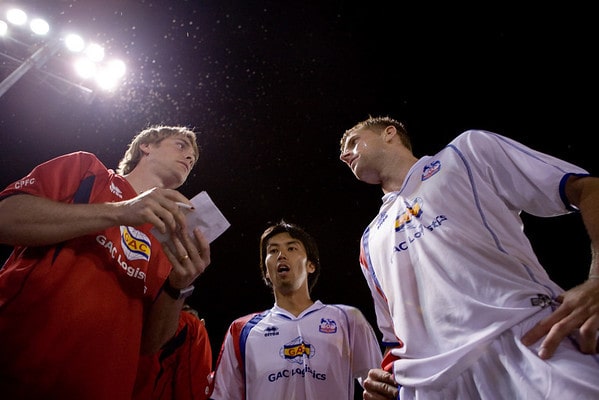
“It’s easy to come in and give a critique, but when you have to put the boots on, and you have the resources that you are limited to, and you have to roll up your sleeves and do the work, it’s a completely different story. Jim and Pete did that. They gave it their best effort, and I appreciate, and I owe them a lot for what they offered me in terms of opportunity and playing.”
Phase five: The demise
“We had two financial backers,” Medd points out, “The Jordans and my family over here in the US. They were both affected by the same real estate catastrophe. The similarities were crazy.”
“As we went into the 2010 season, around January, we were speaking to our main point of contact, Dominic Jordan, and he told us, ‘Look, we’re having issues, we will do everything we can, but just a heads up things aren't going well.’ It was around the same time that my family took the hit too.”
“So, going into our pre-season, we basically did everything under the sun to keep things going,” says Medd, “In retrospect, maybe the thing to do would have been just to shut it down. But we really believed we were going to get a stadium deal, and it was such early days in the recession that nobody really knew what was happening. We thought that the Jordans or my family would be able to pull through the other side, so we made the decision to move ahead with the 2010 season.”
On January 26th 2010, Crystal Palace was placed into administration, with all the club’s assets stripped bare, including Baltimore. The great fire sale began; first, Victor Moses was sold to Wigan Athletic, then manager Neil Warnock was sanctioned to leave for Queens Park Rangers.
Deducted 10 points, going from play-off hopefuls to relegation certainties, slowly but surely, the London side was staring down the barrel of liquidation.
Whilst Crystal Palace were experiencing wave after wave crashing into the club, placing it further into the abyss, the ramifications were being felt across the Atlantic.
Medd recalls, “We needed our league’s support at that point, and there was no one at the end of the phone as we had hoped, unfortunately, as that season unwound. We believed that the Jordans would not leave us in the lurch, as they were speaking to banks and other investors over in the UK. They assured us that we would be a part of any deal, and I believed that.”
On June 1st 2010, Crystal Palace were saved. Steve Parish and CPFC 2010 rescued the club; the deal did not involve Crystal Palace Baltimore.
Jim Cherneski
Cherneski’s role in the club’s history cannot be underestimated. A player, president and chairman, the midfielder was the figurehead of Crystal Palace Baltimore.
Calder explains the background to Cherneski’s origins with the club, “If you think about where Simon (Jordan) would put his money, his outlays when setting up the franchise were sending out kit; that was the only product we got for free, all the kit for the first team and the youth teams. The only actual cash outlay was Jim Cherneski’s salary. Jim’s salary was not to be a manager or player, which he was both, to be honest, but that salary was for his scouting.”
If Palace had taken up Cherneski’s extensive book of contacts and scouting nous, perhaps the partnership could have gone a different way; if Simon Jordan and the backroom staff had pounced on the opportunity to sign Maurice Edu and pushed harder to persuade Neven Subotić.
Calder adds, “If I was ever with Jim, and someone he hadn't met before, that was one of his main stories, talking about how Palace missed the boat and he tried and tried, but the club would not listen.”
Cherneski played 10 times for Crystal Palace Baltimore, scoring twice. During the last dance, in the 2010 season, Cherneski would have to name himself in the starting line-up due to the side not being able to field enough players, playing a game without substitutes against Tampa Bay Rowdies.
Calder continued, “Jim was smart enough to know the club was not going to be able to survive the way it was going. Even though he had an ego, he did want the club to succeed, and he did try other things; it was admirable.”
Phase six: The end
On December 3rd 2010, the partnership officially came to an end, and Crystal Palace Baltimore chose not to field a team for the 2011 season. The four-year affiliation came to a close.
“The things I witnessed were the increasing desperation and frustration of the American owners. They were trying to do things to improve the business; nothing they did worked,” said Calder. “I lined up another job so I could avoid any financial pitfalls, then I quit. It was bittersweet.”
When asked if he had any regrets, Medd paused and took a second to ponder, “Maybe going forward with the 2010 season, we were optimistic and hopeful that we were going to get funding from the new Crystal Palace owner, or that the Jordans or my family would be able to get something together. We took the risk, and we didn’t want to let our players or coaches down, but looking back, maybe the thing to have done would be not to move forward with that season. Looking back, to have a professional soccer team with no financial backing, it’s a difficult thing.”
The blunt end to the club resulted in several bridges being burnt. Keith Tabatznik, alongside six other coaches, took the club to court over unpaid wages, winning a $20,000 settlement. “It was an issue where I had staff that were professionals, very good coaches, and for me, it was a personal commitment to them when I brought them into Crystal Palace Baltimore. One of those things that we all know happens with lower-level clubs, sometimes the paycheques stop coming, and there's reasons, then they will come next week. Those were the issues; I felt an obligation to the staff to do what we needed to do to get them paid. To me, it was an issue of transparency and communication that wasn’t happening, in terms of where the club was financially.”
He continues, “At the time we stopped getting paid, the academy was doing well, with a staff of top coaches in the East Coast. In the short period of time we existed, we attracted players to fill teams from Under-9 to Under-19.”
Medd explains, “Unfortunately, we told Keith, along the lines of what the Jordans told us at one point. ‘You run the academy. It’s your budget. You need to bring in enough paid youth players to cover the expenses, including the coaches' salaries.’
“They didn’t do that; they came up short. But when it was time to reach out to the financial backers to cover the losses, there were none. That’s where we were. However, that’s one of the things that would not have happened if we didn’t try to move on with the season.”
“We didn’t want to let our employees, players or coaches down, and in doing that, we may have made the situation worse than if we had pulled the plug at the time. We wanted to exhaust all efforts and do anything possible to right the ship. It wasn’t to be.”
Why did it fail? Was it ahead of its time?
One of the biggest questions that James Calder believes was never answered was whether Baltimore was the right city for the club to set up their flagship academy. “There have been other attempts, but they have failed. Maybe Baltimore is not the right city for football. I still don’t understand America and their relationship with soccer, I have been here thirty years, and I still don’t get it. It makes no sense to me that one city can get 60,000 fans to a new club, and another one can get 500.”
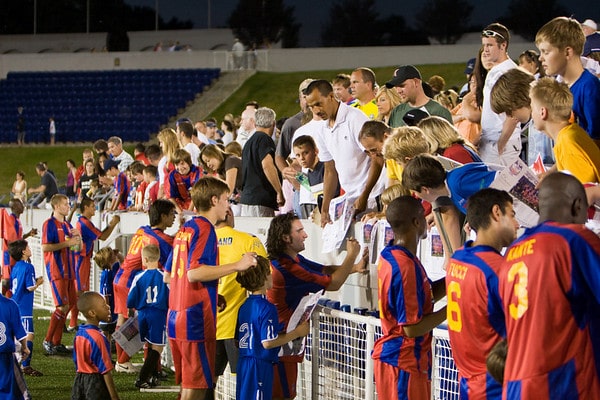
On his return to Selhurst Park, Charlie Sheringham recalls how little interest there was in his time spent at Baltimore, “There was a link there, but the English club wasn’t involved in the American club too much at all. There was no one watching our games, checking our results, or coming to see us.”
Sheringham laughs, “I wouldn’t say there was a lot of interest in us over there, no. At the time, it was just Kit Symons, Peter Taylor and the fitness coach. Nowadays at clubs, you have player liaisons and loan facilitators, who go round, talk to the players out on loan; they look after them, and we didn’t have that back then.”
Marshall believes, “The problem is it was never established as a relationship to have the pro team. It was more established to feed some talent to the first team in England. Our youth academy wasn’t the strongest. It needed time to develop. You can't create a strong youth academy within a couple of years; it takes time to get the coaches, philosophy and attract the talent. Unfortunately, they didn’t have enough time to let that investment really grow and nurture. Would it work again? Absolutely! I think you are seeing that with all the other European and international clubs looking to do the same sort of thing in the US.”
Perhaps the problem was the Crystal Palace brand at the time was not strong enough to attract an American market. The idea is widely regarded by those who witnessed and experienced the journey as ahead of its time. Manchester City and the Red Bull group have started a similar trend, growing the global brand by having feeder clubs, who also shadow as academies.
In September of this year, the City Group took the tally of clubs that they own, or have a stake in, up to ten, purchasing the majority share in French Ligue 2 side, Troyes A.C. Their business venture spans across the whole world, from Mumbai City in India to America with New York City and even to Australia with Melbourne City.
“I think while Crystal Palace is an incredible name in terms of history and tradition in the UK, it didn't have the global impact like Manchester City does now,” explains Tabatznik.
“It was one of the first of its kind,” says Marshall, “A club trying to capture some talent but also promoting brand awareness. Now, you see it everywhere; there’s a PSG academy, Barcelona, Liverpool, and Bayern Munich are here, every pro or youth club has an affiliation. It’s standard practice now, but it was ahead of its time and a little experimental.”
Looking back
The dust has settled now on the Crystal Palace Baltimore experience. It was a rollercoaster four years, and even though it left a sour taste for several people, it also created numerous happy memories, and for Andrew Marshall, he says, “You can look at it two ways; I’ll choose to see the wonderful things that we were able to do, the people involved. It was a great learning experience for sure. Four years in that culture and climate in US soccer was a pretty good accomplishment. I wouldn’t call it a failure. I think it was one of the greatest learning experiences of my life, and that’s the way to approach it. It gave me some incredible relationships and memories from playing.”
Charlie Sheringham would suffer a hairline fracture in his foot which would cut his loan spell at the club short. He only has good things to say about his American adventure, “I have really good memories of it as a life experience. Who wouldn’t want at nineteen to go out and enjoy five months in a different country, getting paid to play with no worries, stress, but just enjoying myself and playing football? When Lewis and I see each other, we still joke, laugh and reminisce about things that went on. For us two, what an experience, and we loved our time there.”
Finishing his interview with VAVEL UK, Pete Medd concludes with one final thought, “The tours that we had, coming over to Selhurst Park, not to mention the three times Palace came over to the US, every manager said it was the best pre-season they ever had. Peter Taylor, as grumpy as he could be, still said it was a brilliant pre-season. Those are the memories you hold onto, and I just know we were a little ahead of our time. We had a global recession that affected a lot of people, and we couldn’t hold on just long enough to get that stadium deal to keep things going. There were a lot of great things that happened.”
“Most professional clubs fail in the US, unfortunately. We were pursuing a model which would have allowed us to stay. We ran out of time, we ran out of money, but it was overall a positive and awesome experience. The Jordans deserve an enormous amount of credit for being pioneers and really seeing what could have been, and they were great to work with.”

